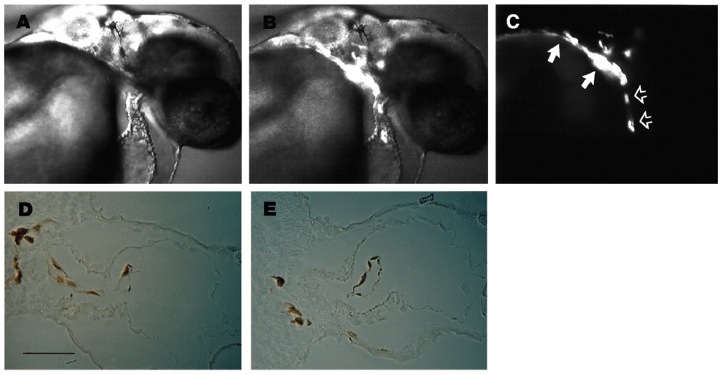Fig. 5 Wild-type cells can form endocardium in clo mutant embryos. Nomarski (A), Nomarski + fluorescence (B), and fluorescence (C) micrographs of the same living 36 hour mutant host embryo. Labeled cells, derived from a wild-type donor embryo, populate the outflow tract (filled arrows) and form an elongated mass of tissue in the ventricular chamber of the myocardial tube (open arrows). Transverse sections through the heart of another mutant host after horseradish peroxidase staining of the biotin dextran labeled wild-type cells (D,E) reveal that transplanted wild-type cells form a distinctly elongated cell layer, the endocardial layer, inside the heart of the host embryo. When endocardium was observed in wild-type (WT) to mutant (M) transplants, all the endocardial cells were derived from WT as assessed by immunoreactivity to biotin (n=10). Scale bar 50 μm (D,E).
Image
Figure Caption
Acknowledgments
This image is the copyrighted work of the attributed author or publisher, and
ZFIN has permission only to display this image to its users.
Additional permissions should be obtained from the applicable author or publisher of the image.
Full text @ Development

